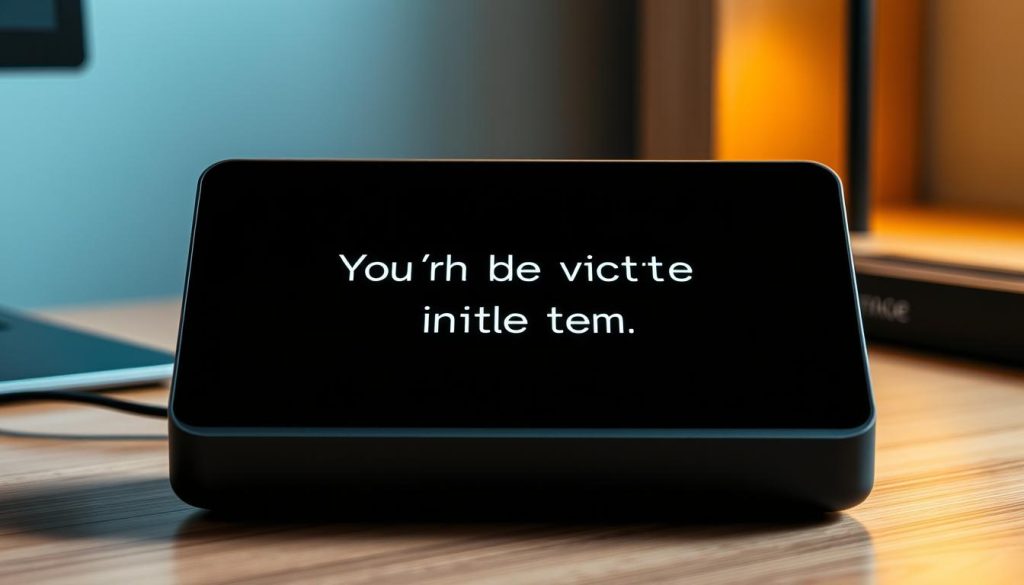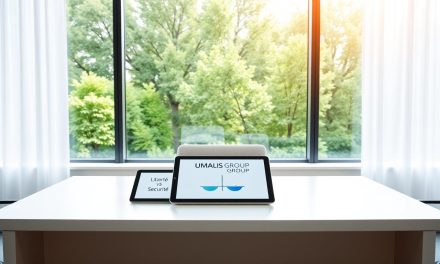Every independent consultant has a moment that defines a career. One morning in Paris, Clara finished a phone call and thought the next steps were clear. She later discovered the client had a different timeline. A brief misread cost time and trust.
That small slip shows why effective communication matters. It is the exchange of information, intent, and feeling that keeps projects on track. A quick written follow-up after a call can prevent confusion and protect cash flow.
Words, tone, and pace change how a message lands. Using positive phrases and « I » statements lowers defensiveness and keeps negotiations calm. Simple habits—headline-style email subjects, purpose-first opening lines, and concise meeting notes—save revisions and speed approvals.
For freelancers in France, clear messaging secures relationships and reputation. Later sections give practical examples, checklists, and a routine you can apply before every meeting or phone contact.
Table of Contents
Key Takeaways
- Clear exchange of information and intent keeps contracts on track.
- Use positive language and « I » statements to reduce friction.
- Make email subjects act as headlines to drive action.
- Always send a concise follow-up after important phone calls.
- Small shifts in tone and pace can transform risk into reassurance.
- Practical checklists and examples help protect client relationships.
- Read more on assertive approaches and examples here.
Why Communication Drives Professional Stability in Today’s Workplace
Predictable revenue often starts with the way we share information. Clear exchanges deepen connections, build trust, and make teams solve problems faster. For an independent professional, this reduces rework, speeds approvals, and prevents scope creep—directly protecting cash flow and reputation.
Misalignments happen when one person says a thing and another hears something else. A missed expectation can become a budget problem or a strained client relationship. Choose the right medium—email, phone, meeting, or in-person—based on audience, timing, and context.
« Follow up important phone calls with a short email summary to lock decisions and deadlines. »
Practical moves you can adopt now:
- Set one clear question at the start to reduce risk.
- Calibrate your tone to the person—executive or technical.
- Use a short update cadence that keeps people informed without flooding their inbox.
When lack of clarity appears, pause and reflect back what you heard. Reset the message before it spreads and costs time. For more on structured development and manager-focused approaches, see our guide on managerial development strategies.
What Effective Communication Really Means at Work
What leaves your mouth or keyboard is only half the job; what lands matters more. Effective communication is about sending a clear message and getting explicit acknowledgment that it was understood.
Context shapes meaning. A noisy room, a hot office, or a client under pressure can distort information. Different cultures read eye contact, facial expressions, and head movements in varied ways.
Message sent vs. message received: ensuring mutual understanding
Close the gap by asking for confirmation every time. Use simple prompts: « What key takeaways are you hearing? » or « Can you confirm the deadline? »
- Ask for acknowledgment at the end of a conversation or meeting.
- Summarize facts and feelings you heard from the speaker to secure alignment.
- Switch medium—from email to phone or in-person—when a topic is complex or emotional.
Context matters: environmental, situational, and cultural cues
Watch nonverbal cues: posture, gestures, and where a person looks. Avoid saying « yes » while crossing your arms or shaking your head; that mixed signal confuses people.
« Adjust timing and channel to the receiver’s energy and setting; it increases the odds your information will stick. »
We recommend a short checklist for high-stakes contact: check the environment, note the audience’s mindset, align body signals with words, and confirm understanding before you end the meeting or phone call.
Diagnose Barriers Before You “Fix” Communication
Spotting the real barrier first prevents well-intended fixes from making things worse. Take a quick diagnostic step before answering high-stakes emails, calls, or meetings. A short check saves time and protects your business reputation.
Stress and emotions can hijack judgment. If tone tightens or reactions spike, pause. Use a deep breath or a one-minute rule: delay the conversation briefly to regain composure and return with clearer intent.
Stress and emotion: how to calm quickly to avoid misfires
Run a pre-flight check. Ask: is intensity high? Are feelings driving choices?
« A one-minute pause often prevents a one-hour problem. »
Lack of focus and multitasking: protecting attention
Multitasking reduces attention. Close tabs, mute notifications, and create a micro-environment for the person you are speaking with. Protect short focus windows for high-value talks.
Inconsistent or negative body language: aligning signals with words
Audit nonverbal cues. Crossed arms, lack of eye contact, or tapping feet send mixed messages.
- Identify negative signals and swap them with open posture and steady eye contact.
- Use brief resets: acknowledge emotions, suggest a pause, and schedule a short follow-up.
- Clarify roles when power or perceived judgment could silence useful input.
Master Active Listening to Build Trust and Clarity
Active listening turns brief exchanges into durable trust. It needs full attention to both words and nonverbal cues. Start by setting the room: silence phones, close tabs, and face the speaker to show respect.
Be present: remove distractions and signal attention
Use open posture, small nods, and steady eye contact to show interest. Favor your right ear when feasible; it often better detects emotional nuance.
Avoid interrupting or steering the talk back to yourself. If concentration flags, use a short, respectful pause to refocus.
Reflect, clarify, and summarize without parroting
Paraphrase with stems like « What I’m hearing is… » to validate meaning and feelings. Reflect content and emotion so the speaker feels understood without feeling judged.
Summarize at natural breaks and end the conversation with clear next steps. This saves time and prevents a lack of alignment later.
« Reflect both what was said and how it was said; trust grows when people feel heard. »
| Practice | Why it helps | Quick cue |
|---|---|---|
| Set the room | Removes distractions, signals priority | Phone off, face the speaker |
| Paraphrase | Clarifies meaning and feelings | « What I’m hearing is… » |
| Watch nonverbal cues | Detects unspoken constraints and risk | Note facial expressions |
| End with notes | Locks agreements and next steps | Share quick summary |
For a deeper read on emotional awareness and relational techniques that support active listening, see our guide on emotional and relational intelligence.
Ask Better Questions to Unlock Needs and Win-Win Outcomes
A focused question can reveal a client’s real constraints in minutes. Use question types as tools: open to explore, closed to confirm, and probing to surface trade-offs.
Open questions build rapport and invite detail. Closed questions gather precise facts fast. Probing questions deepen the exchange and uncover limits.
Open vs. closed vs. probing: when to use each
Open to learn context: « What outcome matters most to you? »
Closed to lock facts: « Is the budget €10k? »
Probing to find options: « How could I change my offer so this is win-win? »
Confirmation and summary questions to prevent misunderstandings
Use short confirmation prompts to validate information before you commit. End with a summary question to align scope and success metrics.
« Could I summarize what you’ve told me to ensure we share the same next steps? »
- Map question type to outcome: explore, confirm, or reveal constraints.
- Layer questions in the conversation to guide flow while leaving space for the other person.
- Avoid multi-part or leading questions that trigger defensiveness in a team or stakeholder.
| Type | Goal | Precise phrasing (example) | Quick cue |
|---|---|---|---|
| Open | Explore needs | « What problem should this solve? » | Invite detail |
| Closed | Confirm facts | « Do you need delivery by May 1? » | Yes/No |
| Probing | Reveal constraints | « What would change your decision? » | Surface trade-offs |
| Summary | Align next steps | « May I summarize our actions? » | Confirm and close |
Micro-script: if dialogue stalls, switch from closed to open: ask one closed fact, then follow with « Can you tell me more about that? » This way you keep momentum without pressure.
Prepare a brief pre-call checklist of objectives and questions. Translate insights into immediate next steps to reinforce clear communication and build confidence in your process.
Read and Use Body Language Intentionally

Nonverbal cues often speak before words do in meetings and video calls. Use them to show interest, calm a tense moment, or invite input.
Posture, gestures, and space: showing interest and respect
Open posture—face the person with shoulders aligned and a slight lean forward—signals interest. Keep a respectful distance so people do not feel crowded.
Avoid crossing arms; it reads as guarded or closed. Favor open palms, short nods, and steady placement of hands. Do not point with fingers. If you feel tension, reset posture to a neutral-positive stance.
Eye contact and facial expressions across cultures
Eye contact and facial expressions vary by culture. In some settings direct eye is a sign of trust. In others it can feel disrespectful.
Watch subtle cues: a hand behind the head can signal doubt, lip compression hints at hesitation, and a raised chin may seem distant. Mirror lightly to build rapport, but stay authentic.
| Practice | Why it helps | Quick cue |
|---|---|---|
| Open posture | Shows engagement and respect | Face the person, slight lean |
| Measured gestures | Reinforce points without distracting | Open palms, nods |
| Calibrated eye contact | Conveys sincerity across cultures | Short, natural glances |
| Video setup | Preserves posture and expression online | Camera at eye level, good light |
« Do a 30-second nonverbal scan before you speak to align signals with your intent. »
Tune Your Tone, Pace, and Words for Impact
How you shape a sentence can change the outcome of a meeting in minutes.
We focus on small, practical shifts that make your message easier to accept. Use positive phrasing and « I » statements to state needs without blaming the other person. This keeps conversations productive and preserves trust.
Positive language and “I” statements vs. aggressive phrasing
Swap problem-focused words for solution-focused ones. For example, say « We’ll deliver in three weeks—would you like to reserve one? » instead of dwelling on delays.
Use short, calm sentences. Practice a breath and posture reset before key exchanges to steady your voice and pace.
Practical cues and a quick checklist
Keep your head and eye line level; this projects calm confidence in person and on video.
- Purpose: state the goal in one sentence.
- Tone: choose steady, neutral pitch.
- Pace: neither rushed nor slow; pause for emphasis.
- Call to action: offer options to keep momentum.
| Problem phrasing | Why it hurts | Rewritten example | Result |
|---|---|---|---|
| « You missed the deadline. » | Sounds accusatory | « I need the update to proceed; can we agree a new date? » | Clears next steps |
| « This is unacceptable. » | Triggers defence | « Here are two viable options to move forward. » | Keeps momentum |
| « You never tell us. » | Blames the person | « I didn’t receive that file; could you resend it by noon? » | Secures action |
| « Fix this now. » | Sounds abrupt | « Could we prioritise this today or shift the scope? » | Invites collaboration |
Quick tip: rehearse one concise sentence that matches your brand language. It helps you stay clear, respectful, and effective in every exchange.
communication skills for High-Stakes Situations
When a meeting tightens and time feels short, a clear micro-plan protects your next move.
60-second routine: breathe, ask a clarifying question to buy thinking time, then frame your message before replying.
Make one point. Give a single, concrete example. Stop. This way you avoid drowning the speaker in details and keep control of the flow.
Use micro-pauses and neutral phrases when emotions rise. Deploy a sensory anchor—a deep breath or light tactile cue—to lower intensity within seconds.
- Manage body signals: steady posture, relaxed shoulders, calm eye line.
- Choose a quick phone call when threads escalate; it often clears meaning faster than long messages.
- Redirect heated exchanges to shared goals so people stay focused on business outcomes.
« Make one clear point, give an example, then close with a short summary. »
Short checklist: prep tough questions, use the 60-second plan, document agreements immediately with a concise summary to lock decisions and next steps.
Be Assertive Without Being Aggressive
Being firm does not require force; it asks for clarity and care. For independent professionals, assertiveness is a simple, repeatable way to protect scope and reputation. It is a practical skill that keeps your business steady.
Assertiveness means stating thoughts, feelings, and needs honestly while keeping respect for the other person. Use « I » statements to own your message. Avoid « you » phrasing that can sound like judgment.
Express needs clearly while preserving respect
Begin by acknowledging constraints, then state your request. For example: « I understand your timeline is tight. I need an extra week to deliver quality. Can we agree on a new date? » This keeps words neutral and outcomes clear.
Empathetic and escalating assertion with consequences
If requests are ignored, escalate in steps: reminder, firm deadline, then a stated consequence. Be factual about business impact rather than emotional. Example: « If we miss the revised date, I will pause work until terms are updated. »
- Prepare scripts for fees, deadlines, and scope changes.
- Choose the right way to deliver sensitive messages—phone for nuance, email for record.
- Track results to refine your approach and strengthen team trust.
Keep Stress in Check to Communicate Under Pressure
Pressure narrows thinking; a deliberate pause widens your options. In high-stakes business moments, use stalling tactics that buy you a clear reply rather than a rushed one.
Rapid resets work fast. Breathe deeply, unclench your jaw, relax your shoulders, and take a micro-pause before you speak. Small sensory anchors — a fingertip press or five slow breaths — calm the body and steady the voice.
Rapid resets: breath, micro-pauses, and sensory anchors
Watch for signs: tight shoulders, shallow breath, a locked head or clenched hands. Intervene early to keep emotions from escalating.
Make one point, give an example, and summarize
When time is short, state one clear point, add a brief example, then close with a short summary. This structure preserves clarity and makes follow-up actions simple.
Use appropriate humor and know when to pause
Light humor can reduce tension if the tone allows. If not, suggest a brief break or a phone follow-up to reset expectations and preserve respect.
- Quick routine: breathe, relax head and neck, pause, then speak.
- Use attentive listening to reframe heated exchanges toward shared outcomes.
- End with a concise summary to lock decisions while minds are clear.
« A calm reset before you answer saves time and protects relationships. »
Choose the Right Channel: Phone, Email, Meeting, or In Person
The medium you choose often decides whether an exchange speeds up or stalls. Make the choice based on complexity, urgency, and who must act. For quick alignment use a phone call; for detailed specifications prefer email; for decisions schedule a meeting; for rapport, meet in person.
Phone essentials
Prepare. Reduce distractions, check reception, and set a clear objective before you dial.
Use active listening: let the other person speak, paraphrase key points, and ask focused questions to confirm information. Keep messages concise and end with next steps.
Leave a clean voicemail with your name, company, reason, and phone number. A typical script: name, one-line reason, callback number, and a polite close.
Follow-up and timing
After important calls, send a short email that summarizes agreements, deadlines, and owners. This locks decisions and avoids surprises.
Return missed calls within 24–48 hours. If bandwidth or accent causes strain, slow your pace, repeat critical facts, and make sure the other person confirms understanding.
Choosing the best way
- Phone: quick alignment, clarifying questions, or time-sensitive contact.
- Email: detailed specs, records, and attachments.
- Meeting: decisions that need discussion and group agreement.
- In person: building trust, complex negotiation, high rapport.
| Channel | Primary use | Quick cue |
|---|---|---|
| Phone | Fast alignment, clarifications | Prep objective; leave number |
| Detailed information, record | Lead with purpose | |
| Meeting | Collective decisions | Share agenda in advance |
« Match channel to complexity and audience to keep your business moving forward. »
Write Emails People Read and Act On

A single subject line can decide whether your message is read or ignored. Use the subject like a newspaper headline: clear, specific, and deadline-driven. Start the body by stating the purpose in the first paragraph so recipients know the ask at once.
Subject lines as headlines; lead with purpose
Write a subject that explains the outcome and date. Examples: « Approve Q3 scope — decision by May 14 » or « Meeting: Confirm agenda for Tuesday (30 min) ». This sets expectations and a number for urgency.
Clarity, tone, and proofreading to avoid misinterpretation
Keep body text scannable: short paragraphs, bullets, and one clear call to action. Avoid sarcasm; words can be read harshly without voice or body cues. Proofread aloud to catch ambiguity and unintended tone.
- Include contact details: direct line and alternative number for quick follow-up.
- Attach files carefully and note versions to prevent confusion.
- When feedback is critical, pick the phone or meet in person rather than rely on email alone.
« Lead with purpose, end with a concise summary and clear next steps. »
Build a Team Culture of Respect, Feedback, and Shared Goals
Healthy team culture starts with clear expectations and predictable rituals. Define one shared goal, then translate it into norms, roles, and measurable milestones. This makes collaboration tangible and accountable.
Set respectful ground rules that invite people to speak and prevent public reprimands. Empowerment grows when you ask, « What do you think? »—it builds ownership and buy-in.
Good meetings use timed agendas, structured input, balanced participation, and short follow-up summaries of decisions and owners. Avoid gatherings held only because they are scheduled.
Set norms, roles, and accountability for effective collaboration
List expectations, cadences, and confidentiality rules. Assign clear owners and simple metrics so every person knows deliverables and due dates.
Facilitate meetings that generate solutions, not status updates
Start with prior actions, enforce a timed agenda, and close with named owners and next steps. Use prompts to balance voices and bring quieter contributors in.
« Track meeting ROI: decisions made, risks retired, actions assigned. »
- Clarify cross-cultures etiquette—eye contact and turn-taking—to avoid friction.
- Avoid closed gestures like tightly folded arms; arrange the room to support equal participation.
- Use brief, behavior-based feedback tied to goals so growth feels safe and continuous.
For guidance on remote exchange best practices, see our online exchange.
Conclusion
Small, repeatable routines make uncertain exchanges reliable. Mastering communication skills is the most reliable way to secure professional stability as an independent.
Use a simple system—prepare, deliver, confirm—across email, phone, meetings, or in person. Choose the way that fits the message and the people involved.
Align eye and body signals with your words. Reinforce agreements with a brief written summary so information and decisions stay clear.
Build team habits: respectful meetings, crisp feedback, and short follow-ups. Over time, effective communication reduces rework, speeds decisions, and protects your business reputation.
Tip: Revisit the checklists and scripts before your next critical exchange to keep outcomes steady.
FAQ
What do we mean by "communication skills" and why is it key to professional stability?
We mean the ability to send and receive clear, respectful messages that protect relationships and produce reliable outcomes. Strong verbal and nonverbal techniques—eye contact, tone, concise wording, and thoughtful listening—reduce misunderstandings, improve team trust, and make your independent practice or business more resilient.
How can I ensure the message sent matches the message received?
Use simple language, check understanding with summary questions, and watch for nonverbal cues. Ask the listener to paraphrase the main point, pause for feedback, and adjust tone or examples until you see aligned facial expressions and nods that signal comprehension.
What contextual cues should I consider when communicating at work?
Consider environment (noise, privacy), timing (when people are focused), and cultural norms (eye contact, personal space). Match formality and channel to the situation: an urgent issue may need a phone call or in-person chat, while routine updates fit email with a clear subject line.
How do stress and strong emotions create barriers, and how do I calm quickly?
Stress narrows attention and biases interpretation. Use a rapid reset: three deep breaths, a short pause, and a grounding cue (feet on floor, steady gaze). Name the emotion briefly—“I’m frustrated”—then return to the issue with a short, specific request.
What practical steps stop multitasking from harming conversations?
Remove distractions: close tabs, silence notifications, and position devices face down. Signal presence with eye contact and an open posture. If interruption is unavoidable, explain briefly and set a time to resume so attention is protected.
How do I align body language with my words when giving difficult feedback?
Stand or sit upright but relaxed, maintain appropriate eye contact, and keep arms uncrossed. Use a calm tone and brief, concrete examples. Pause for response, mirror neutral expressions, and end with a collaborative next step to preserve respect.
What does active listening look like in practice?
Be present: remove distractions, nod minimally, and lean slightly forward. Reflect key points without parroting, ask clarifying questions, and summarize outcomes. This signals interest, reduces assumptions, and builds credibility.
When should I use open, closed, or probing questions?
Use open questions to explore needs and perspectives, closed questions to confirm facts or decisions, and probing questions to dig into motives or constraints. Combine them: start open, probe selectively, and close with a confirmation question to lock in agreement.
How do I use posture, gestures, and space to show respect in meetings?
Keep an upright but relaxed posture, use small, purposeful gestures, and respect personal space. Position yourself so everyone can see your face. These choices signal engagement and reduce perceived threat across cultures.
Are there cultural differences for eye contact and facial expressions I should know?
Yes. Some cultures expect steady eye contact; others find it intrusive. Prefer moderate eye contact and watch the other person’s comfort. Observe facial expressions and mirror appropriately to avoid misreading emotions.
How can I tune my tone and pace for more persuasive conversations?
Slow slightly, lower pitch modestly for authority, and use positive, « I »-focused statements rather than blame. Pause before key points, and vary pace to emphasize benefits and next steps. Keep language concrete and action-oriented.
What are best practices for high-stakes conversations?
Prepare objectives, anticipate reactions, and plan clear examples. Open with the purpose, use short statements, and invite input. Keep one primary aim, summarize agreements, and set follow-up actions to ensure clarity and accountability.
How do I be assertive without sounding aggressive?
State your need briefly, use a calm tone, and pair it with respect—“I need X by Y; can we do that?” Offer rationale, invite alternatives, and set consequences only when necessary. Empathy plus firmness preserves relationships and results.
What quick techniques help me communicate under pressure?
Use micro-pauses, a two-breath reset, and a single clear point supported by a short example. If tension rises, inject light, appropriate humor or propose a brief break. These resets reduce emotional escalation and keep focus.
How do I choose the right channel—phone, email, meeting, or in person?
Match complexity and urgency to the channel. Use phone or in person for nuance and immediate feedback; email for documented, non-urgent decisions; and meetings for collaborative problem-solving. Always state expected response times and next steps.
What makes an email people actually read and act on?
Use a clear subject line that states the purpose, begin with the ask, and keep paragraphs short. Use bullet points for actions, set deadlines, and proofread for tone. A one-line summary of the desired outcome at the top improves response rates.
How do I set team norms that encourage respectful feedback and shared goals?
Define roles and meeting rules, invite regular feedback rituals, and document decisions and follow-ups. Model concise, respectful language and reward accountability. Clear norms reduce friction and promote sustainable collaboration.
What should I do when meetings become status updates instead of solution sessions?
Redesign agendas to focus on decisions and actions, assign prework, limit attendees to those who contribute, and end with clear owners and deadlines. Use a parking-lot for off-topic issues and schedule separate follow-ups when needed.





